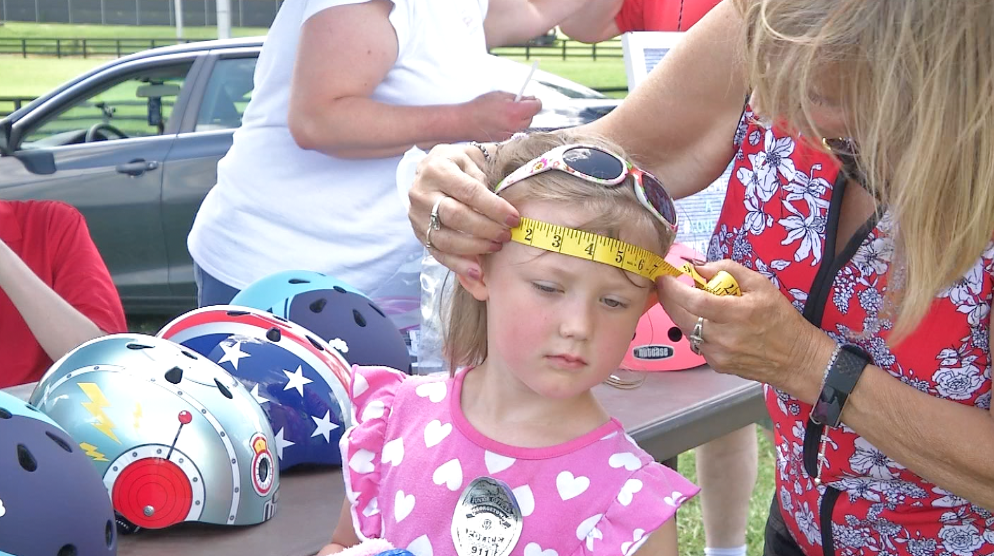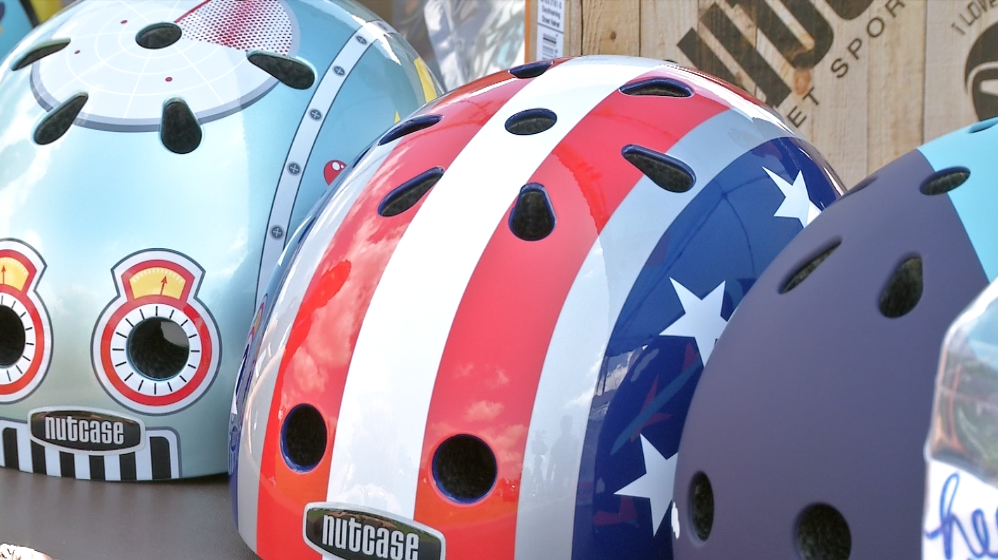Bicycling is fun, healthy, and a great family activity. But, a bicycle isn’t a toy; it’s a vehicle.
Some bike crashes can cause serious injuries and most are related to the behavior of you (the bicyclist) or the motorist. There are a number of things you can do to prevent a crash, and protect your brain if a crash occurs.
Safe Riding Tips
Before riding, make sure you, your family, and the bicycles are ready to ride.
Remember to:
- Wear a Bicycle Helmet. Everyone – at every age – should wear bicycle helmets. For more guidance on fitting a helmet, see the National Highway Traffic Safety Administration’s Fitting Your Bike Helmet.
- Adjust Your Bicycle to Fit. Stand over your bicycle. There should be 1 to 2 inches between the rider and the top tube (bar) if using a road bike and 3 to 4 inches if using a mountain bike. The seat should be level front to back, and the height should be adjusted to allow a slight bend at the knee when the leg is fully extended. The handlebar height should be level with the seat.
- Check Your Equipment. Before riding, inflate tires properly and check that the brakes work.
- See and Be Seen. Whether daytime, dawn, dusk, bad weather, or at night, make yourself visible to others. Wear neon, florescent or other bright colors when riding to be most easily seen. Wear something that reflects light, such as reflective tape or markings, or flashing lights. Remember, just because you can see a driver doesn’t mean the driver can see you.
- Control the Bicycle. Ride with two hands on the handlebars, except when signaling a turn. Place books and other items in a bicycle carrier or backpack.
- Watch for and Avoid Road Hazards. Look for hazards such as potholes, broken glass, gravel, puddles, leaves, and dogs. All these hazards can cause a crash.
- Use Verbal and Non-Verbal Communication. This includes eye contact with drivers, turn signals, pointing to road hazards for bicyclists behind you, and stating “passing on your left,” or “on your left.
- Avoid Riding at Night. It’s hard for road users to see bicyclists at dusk, dawn, and nighttime. Use reflectors on the front and rear of your bicycle. White lights and red rear reflectors or lights are required by law in all States.

Rules of the Road – Bicycling on the Road
In all States, bicycles on the roadway are considered vehicles, and bicyclists are the drivers, with the same rights and responsibilities as motorist to follow the rules of the road.
When riding always:
- Go With the Traffic Flow. Ride on the right in the same direction as other vehicles. Go with the flow – not against it.
- Obey All Traffic Laws. A bicycle is a vehicle and you’re the driver. When you ride in the street, obey all traffic signs, signals, and lane markings.
- Yield to Traffic. Almost always, drivers on a smaller road must yield (wait) for traffic on a major or larger road. If there is no stop sign or traffic signal and you are coming from a smaller roadway (out of a driveway, from a sidewalk, a bike path, etc.), you must slow down and look to see if the way is clear before proceeding. Yield to pedestrians in a crosswalk.
- Be Predictable. Ride in a straight line, not in and out of cars. Signal your moves to others.
- Stay Alert at All Times. Use your eyes and ears. Watch out for potholes, cracks, wet leaves, storm grates, railroad tracks, or anything that could make you lose control of your bike. Listen for traffic and avoid dangerous situations; don’t use personal electronics when you ride.
- Look Before Turning. When turning left or right, always look behind you for a break in traffic, and then signal before making the turn. Watch for left- or right-turning traffic.
- Watch for Parked Cars. Ride far enough out from the curb to avoid the unexpected from parked cars (like doors opening, or cars pulling out).

Where to Ride Safely
- Use bike lanes or bike paths, if available.
- While bicycles are allowed on many roads, riders may feel safer than being separated from traffic. A lane or path is a safer choice than riding on a sidewalk.
- Riding on sidewalks puts you in a place where cars do not for or expect to see moving traffic.
- Sidewalk riding puts you at risk for crashes at driveways and intersections.
- Children younger than 10 years old are not consistently able to make the decisions necessary to safely ride unsupervised in the street. Therefore, they are safer riding away from traffic.
- For anyone riding on a sidewalk:
- Check the law in your State or jurisdiction to make sure sidewalk riding is allowed
- Watch for vehicles coming out of or turning into driveways.
- Stop at corners of sidewalks and streets to look for cars and to make the drivers see you before crossing.
- Enter a street at a corner and not between parked cars. Alert pedestrians that you are nearby, saying “Passing on your left,” or use a bell or horn.


